Hey, let’s tackle soil compaction that’s choking your plants. Start by limiting heavy machinery on your garden beds, especially when the ground’s wet—think after a rain, when soil’s most vulnerable. Wet soil compresses under weight, squeezing out air roots need. Curious about other simple fixes, like foot traffic or watering tricks, to keep your soil loose and healthy? Stick around for more practical tips!
Contents
Heavy Machinery Usage
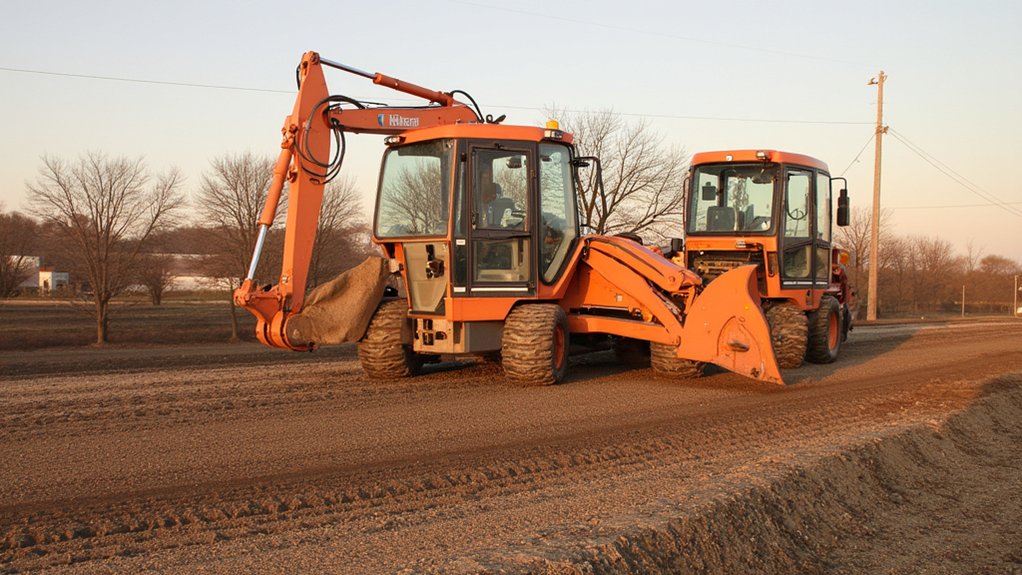
Let’s explore three key ways heavy machinery can cause soil compaction, and how you can avoid it. First, the sheer weight, often over 5,000 pounds, presses soil particles tight, reducing air pockets. Limit use on wet soil, as moisture worsens compaction.
Second, repeated passes over the same area, especially within a short 2-hour window, create deep ruts. Stick to designated paths and vary your routes, if possible, to spread the impact. Third, using oversized equipment on small plots, like a 3-ton tractor on a half-acre, over-compresses soil fast. Opt for smaller, lighter machines under 2,000 pounds for tight spaces. Check soil dryness before driving, waiting 24-48 hours after rain, and you’ll dodge most compaction issues with ease.
Excessive Foot Traffic
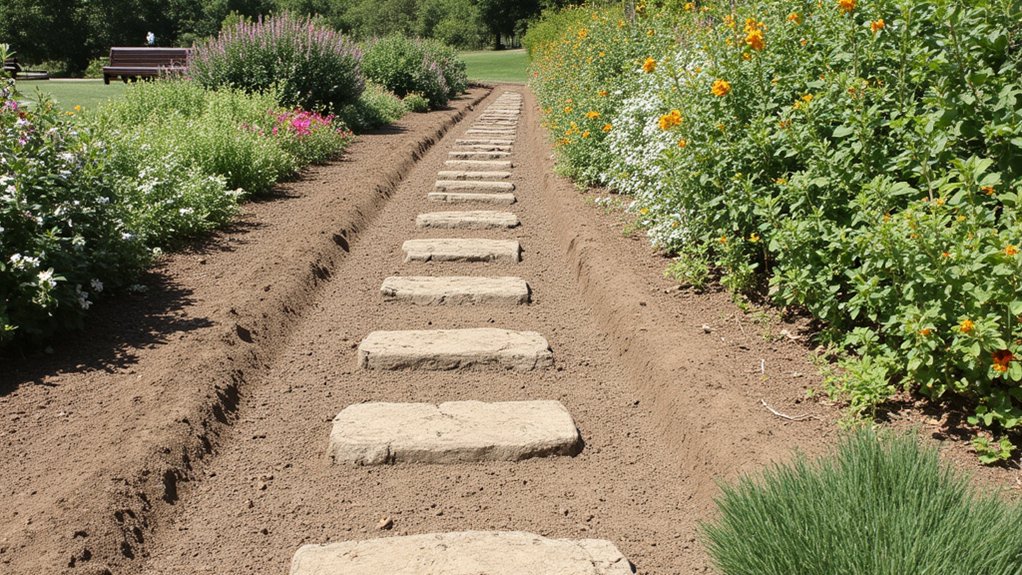
Moving from the impact of heavy machinery, consider how your own steps can harm soil health. You might not realize it, but walking repeatedly over the same garden paths compacts the soil beneath your feet. This pressure, especially in a small 10-by-10-foot plot, can reduce soil porosity by up to 30%, limiting root growth.
Overwatering Risks
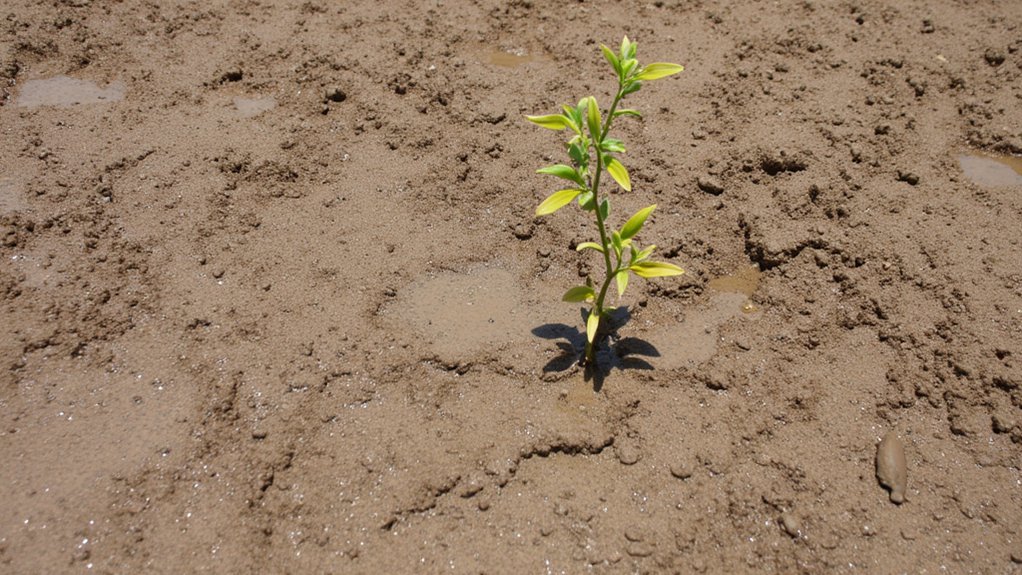
While foot traffic can squeeze soil tight, overwatering poses another sneaky threat to your garden’s health. You might think more water equals happier plants, but that’s not true. Too much moisture fills soil pores, leaving no room for oxygen, which roots desperately need.
When you overwater, soil particles stick together, forming a dense, compacted mess. Check your garden after watering; if puddles linger for over an hour, you’re probably overdoing it. Stick to a schedule—water deeply just once or twice a week, depending on weather, aiming for about 1 inch of water each time.
Don’t guess; use a rain gauge or small container to measure. Adjust based on rainfall, and watch your plants. They’ll thank you with healthier growth!
Poor Tilling Practices
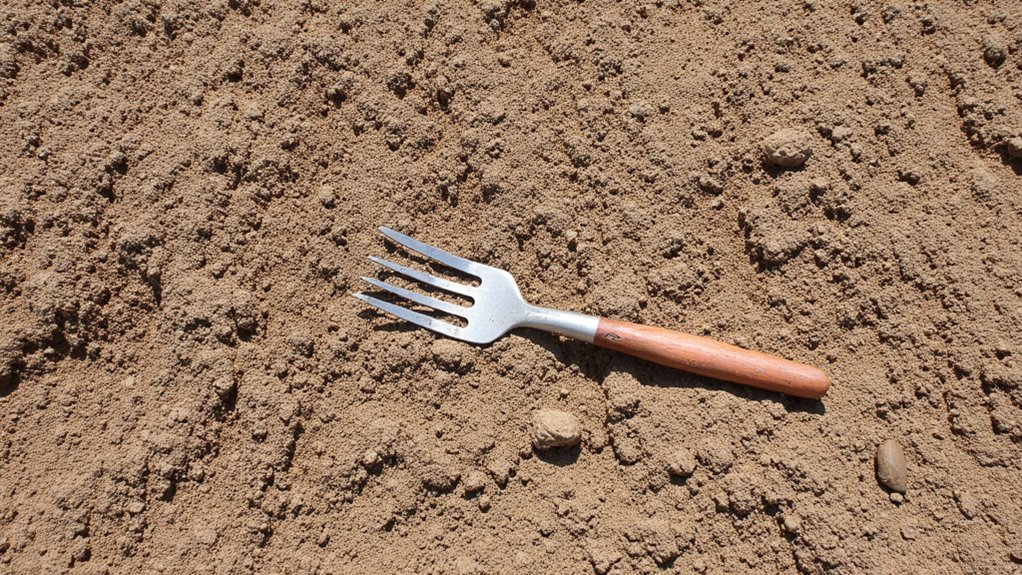
Beyond watering woes, poor tilling practices can also pack your soil into a stubborn, unworkable state. You’re likely tempted to till every season, but overdoing it breaks soil structure. This creates a dense layer, often 6-12 inches deep, that roots can’t penetrate.
Don’t till when soil’s too wet, either. Check it first—grab a handful, and if it sticks like glue, wait a day or two. Wet soil compacts under pressure, ruining aeration.
Instead, till only once yearly, preferably in early spring. Use a garden fork for small areas, turning soil to a depth of 8 inches max, and avoid heavy machinery unless necessary. You’ll preserve soil texture this way. Keep it light, and don’t rush—patience pays off in healthier plants.
Compacted Clay Soil
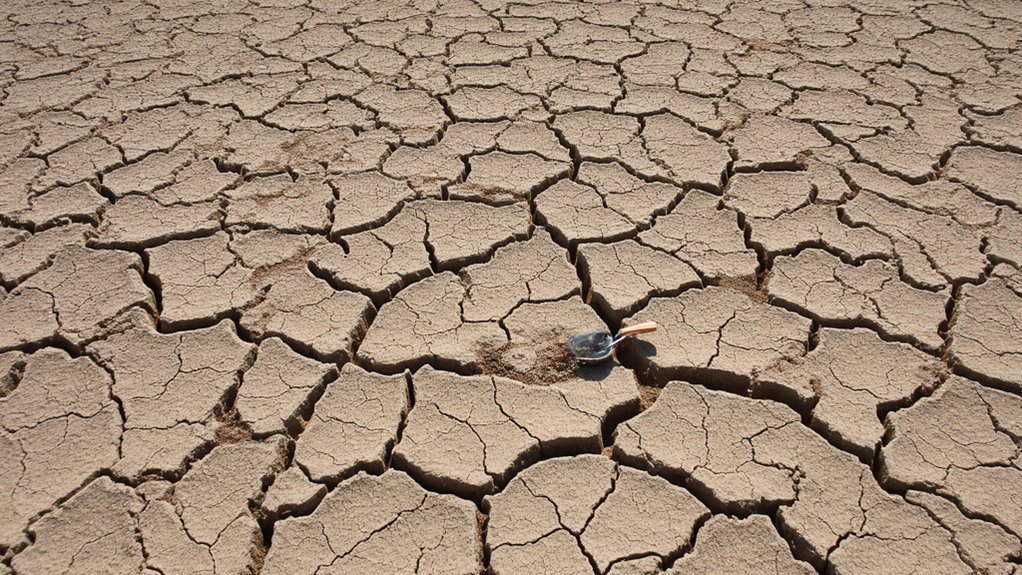
As you tackle your garden challenges, compacted clay soil might be your toughest opponent yet. It’s dense, heavy, and holds water like a sponge, suffocating roots. When wet, it’s sticky; when dry, it’s rock-hard.
Don’t worry, though—you can fight back with smart steps. Start by testing your soil’s texture; grab a handful, squeeze it, and if it forms a tight ball, you’ve got clay. Next, add organic matter, like compost or aged manure, at least 2-3 inches deep, and mix it in with a garden fork. Do this annually, preferably in fall.
Lastly, avoid walking on wet clay soil. Lay down boards or paths to spread your weight. Keep at it, and you’ll loosen that stubborn ground!
Inadequate Crop Rotation
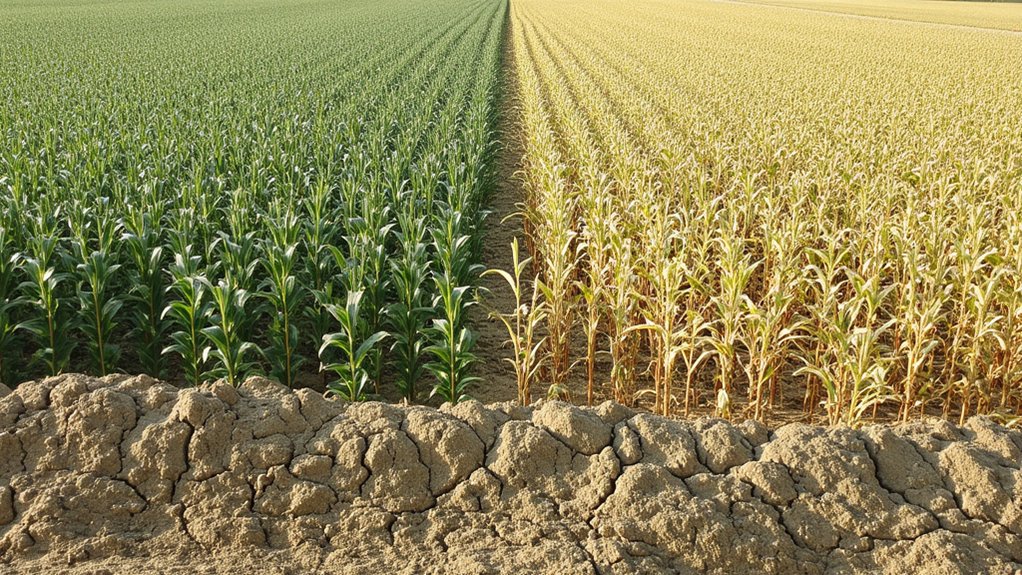
If you’re not rotating your crops, you’re setting yourself up for soil compaction issues down the road. Same plants, same spot, year after year—it’s a recipe for trouble. They pull the same nutrients, stress the soil, and create dense, packed layers.
Switch things up every 2-3 years, alright? Plant different crops, like swapping corn for beans, to vary root depths—corn roots dig down 3-6 feet, while beans stay shallower at 1-2 feet. This breaks up hard layers naturally. Check your field’s history, plan a 3-year rotation cycle, and stick to it.
Don’t just guess; map it out. Mark sections, note planting dates, and track changes. Consistent rotation keeps soil loose, workable, and ready for growth.
Insufficient Organic Matter
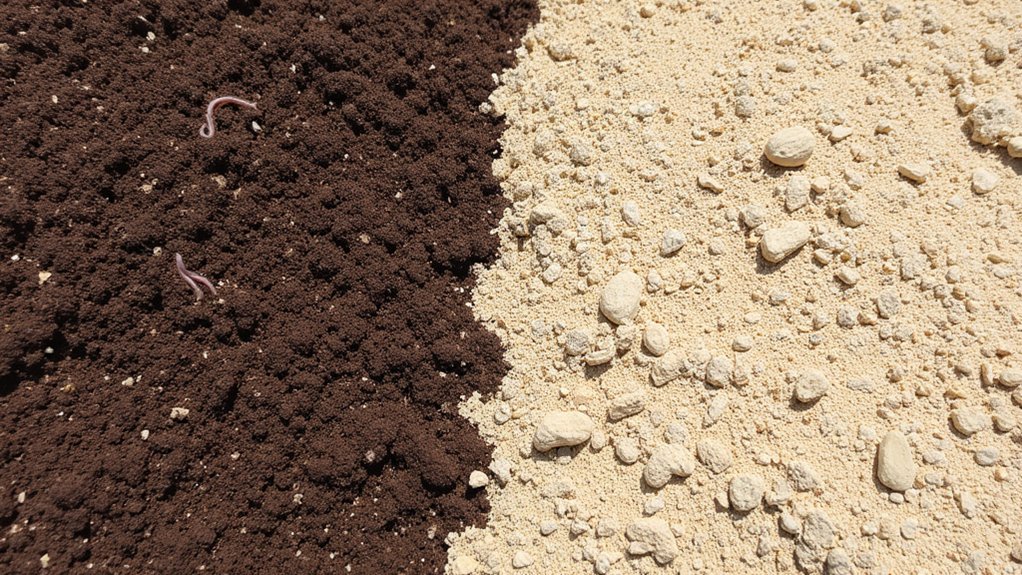
Hey, let’s talk about insufficient organic matter, a sneaky cause of soil compaction. You see, without enough organic stuff like compost or decayed leaves, your soil loses structure. It gets dense, hard, and suffocates plant roots.
So, start by testing your soil’s organic content—aim for 5-10% by volume. If it’s low, mix in 2-3 inches of compost yearly, ideally in spring or fall. Spread it evenly, then till lightly to blend it, avoiding deep disruption.
Don’t skimp on this step; organic matter acts like a sponge, holding water and air. Check every season, and if it’s still compacted, add another inch of material. Keep at it consistently, and you’ll notice looser, healthier soil in just a few months.
Aggressive Lawn Mowing
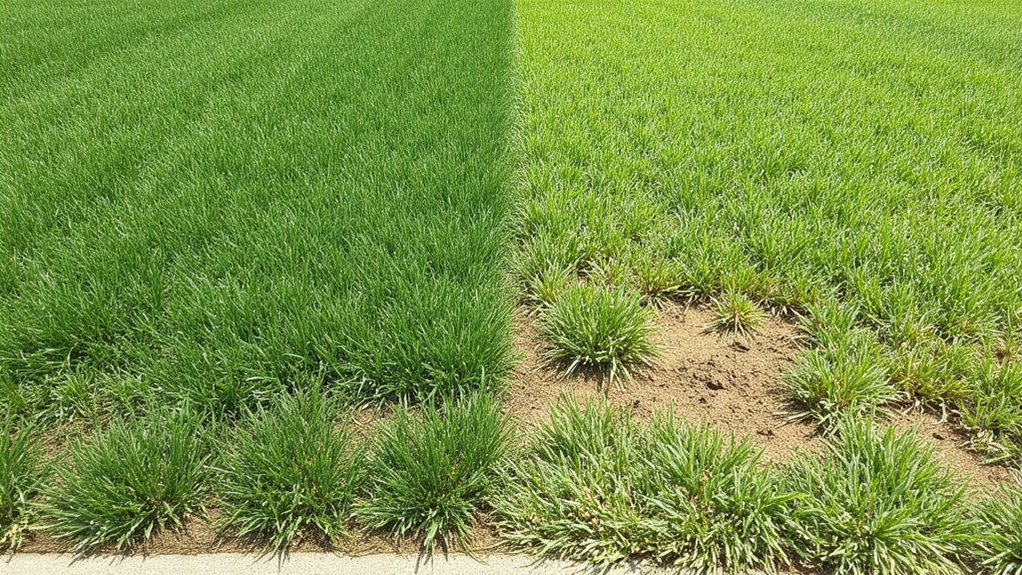
While maintaining a neat lawn feels satisfying, aggressive mowing can seriously compact your soil. You’re likely cutting too short, which stresses grass roots and packs the ground tight. This reduces air and water flow, suffocating your plants over time.
So, adjust your mower height to at least 3 inches. Taller grass shades the soil, keeps it loose, and encourages deeper roots. Mow no more than once a week, and never remove over one-third of the blade length at once. This prevents shock and compaction.
Also, vary your mowing pattern each time. Don’t always go the same way; switch directions to avoid creating ruts. Finally, keep those blades sharp—dull ones tear grass, worsening soil stress. Follow these steps, and you’ll protect your yard.
Harsh Chemical Fertilizers
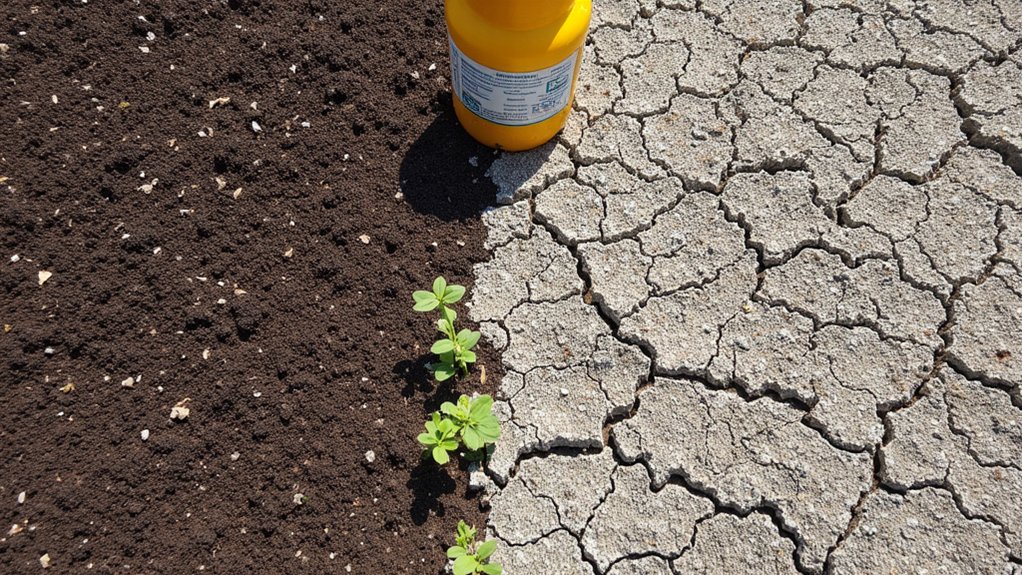
Moving from lawn care habits, let’s tackle another sneaky cause of soil compaction: harsh chemical fertilizers. You might think they’re just feeding your plants, but overuse can harm your soil structure. These fertilizers, often high in salts, draw moisture out, leaving soil particles tightly packed.
When you apply them too frequently, say more than once every 6 weeks, or in heavy doses beyond 1 pound per 100 square feet, you’re risking compaction. The soil turns hard, almost like concrete, suffocating roots. Instead, test your soil first with a simple kit from a garden store. Then, use only what’s needed, following package instructions precisely. Switch to organic options, like compost, every other application to keep soil loose and healthy.
Neglecting Mulch Application
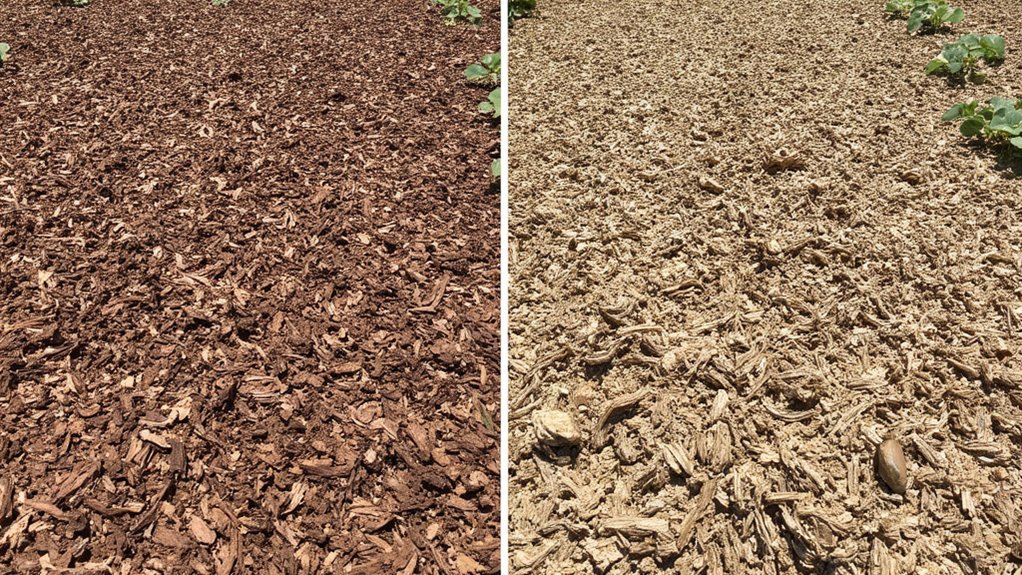
As we dig deeper into soil care, let’s talk about neglecting mulch application, a common oversight. You might think it’s just a nice-to-have, but mulch is essential for preventing soil compaction. It acts like a protective blanket, keeping soil loose and breathable.
Don’t skip this step, or you’ll risk hard, packed dirt suffocating your plants’ roots. Spread a 2- to 3-inch layer of organic mulch, like wood chips or straw, around your plants. Do this every spring, and check it mid-season to refresh if it’s thinning. Make sure you leave a 1-inch gap near stems to avoid rot.
